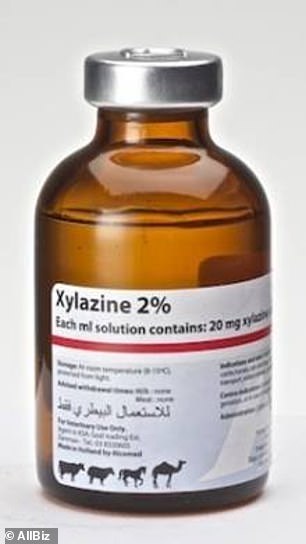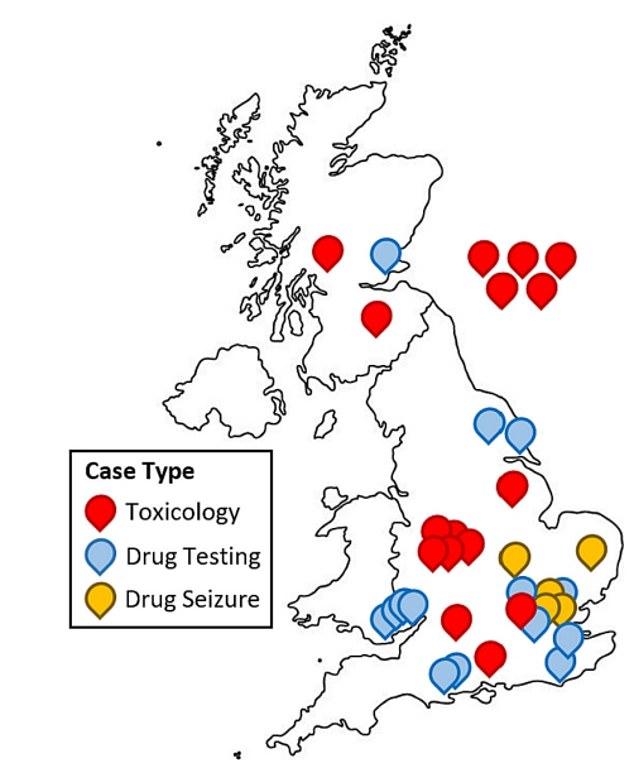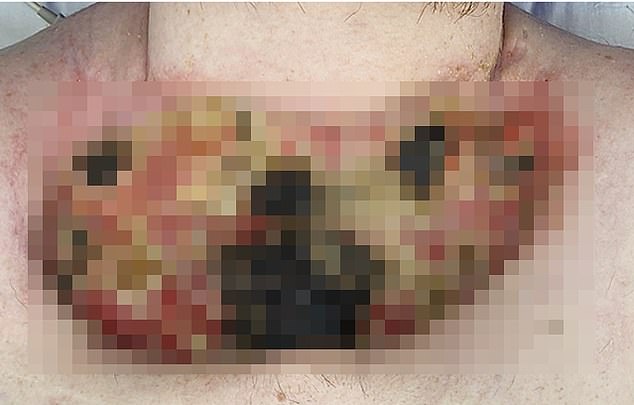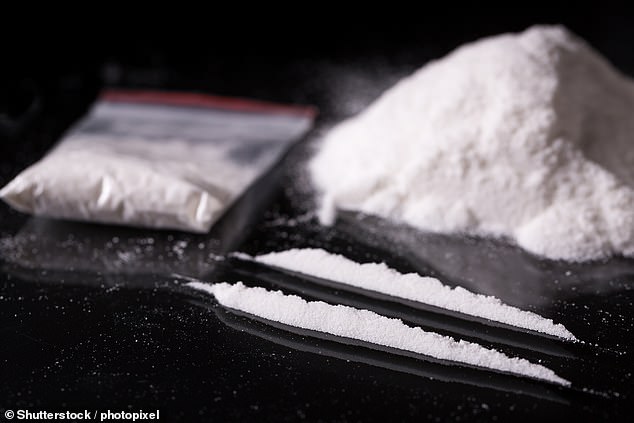Flesh-rotting ‘zombie drug’ Tranq has killed 11 Britons and is now widespread in Britain, experts warn: Tranquilizer powerful enough to drop an elephant has devastated US cities
A killer meat-sedative animal tranquilizer is now widely found in cocaine sold in Britain, experts have warned.
Xylazine, nicknamed ‘tranq’, has helped turn US cities like Philadelphia and New York into ‘zombie lands’, leaving users lifeless.
But the powerful drug – strong enough to incapacitate elephants – is now widespread on British streets.
It has already been linked to 11 deaths, but experts say this could be the tip of the iceberg and hundreds more could die in the coming years.
Researchers found calm in the supply of hard opioids like heroin and fentanyl.
Karl Warburton, 43, (pictured) died in May 2022 from xylazine in combination with other drugs including heroin, fentanyl and cocaine
Dealers use the substance as an adulterant to make drugs even more powerful than they already are and to stretch supplies.
Academics from King’s College London also found narcotics in cocaine, counterfeit codeine and Valium tablets, and some cannabis vapours.
Experts warned this showed the extent to which sedation has invaded the UK drug supply, with users unaware they were buying drugs with the sedative added.
Tranq can rot the body from the inside out and cause ulcers in people who inject the drug directly into their blood.
Analysis of the toxicology report has linked tranq to 11 deaths in Britain since 2022, the majority of which occurred last year.

A powerful animal tranquilizer that has helped turn some US cities into ‘zombie countries’ is being added to Britain’s cocaine supplies, experts warn
This is believed to include Karl Warburton, a 43-year-old factory worker who became Britain’s first known drug victim in 2023.
Researchers warned that this figure of 11 is likely a “gross underestimate” given that British labs have not routinely tested for the drug.
Many of the people included in the toxicology reports also tested positive for cocaine use.
Writing in the journal Addiction, experts warned that if Tranq exploded during use, as it has in the US, hundreds of Britons could die.
“If Britain were to experience the 20-fold increase in deaths since 2015 in the US, the number of deaths from xylazine use could be expected to exceed 220 deaths by 2028,” they said.
Xylazine was originally developed in the 1960s as an animal tranquilizer, typically for large animals such as cows and horses.
It binds to and blocks adrenergic receptors in the brain, which release the stress hormones norepinephrine and dopamine, effectively slowing brain activity.
The result is a reduction in pain and stress, as well as a feeling of euphoria similar to that of opioids.
As such, the powerful narcotic effects can dangerously lower people’s heart rate and breathing.
Senior author Dr Caroline Copeland, an expert in toxicology, said: ‘We now know that xylazine has entered the illicit drug market in Britain.

This map shows the locations where xylazine has been detected in Britain in a combination of human toxicology reports, as well as samples taken from medicines tested or seized by authorities. Locations are approximate based on the reported county or city. Five toxicology cases where the location is completely redacted are placed to the right of the map, and two cases where the location is only listed as Scotland are placed randomly within the country

Xylazine depresses the central nervous system, causing users, like these in Philadelphia’s Kensington neighborhood, to exhibit a zombie-like appearance

The flesh-eating drug can affect a person’s skin in areas beyond the injection site. This patient often injected the drug into his neck with horrific consequences
‘This is cause for concern as a much larger population of people who use drugs than just heroin users will be exposed to its harms.’
She called on Britain to take three measures to prevent a similar tranq epidemic to the one that has hit the US.
‘Cheap xylazine test strips should be made available, health care providers should be aware of the signs that chronic skin ulcers are due to xylazine use, and pathologists and coroners should request specific toxicology testing for xylazine in relevant cases to provide insight get into the actual prevalence of the xylazine test strips. medicine,” she said.
In addition to looking at toxicology reports, Dr. Copeland and his team also looked at 14 drug samples that tested positive for tranq.
Two of these were for THC vapors (the psychoactive component of cannabis), the rest were counterfeit painkillers, sleeping pills and anti-anxiety drugs.
The rise of Tranq in the US, where the powerful sedative is mixed with stimulants such as cocaine and methamphetamine, has been blamed for creating ‘zombies’ on the streets of major cities such as Philadelphia, New York, Sacramento and Portland.
The combination of sedatives and stimulants turns users into human statues that exist in a zombie-like state, rather than passing out completely.
The other known effect is a ‘flesh-rotting’ property seen in people who take it.
Although not yet fully understood, the theory is that Tranq constricts blood vessels, slowing or blocking the flow of oxygen-rich blood through the body.
This can prevent major and minor injuries, including drug injections, from healing properly, increasing the risk of infection.
Its presence in cocaine is of particular concern for Britain, with Britain having the highest use of the drug in Europe.
One in forty adults (2.7 percent) in Britain use class A drugs, more than any other country in Europe, figures from the Organization for Economic Co-operation and Development show.
Once the preserve of high society, cocaine is now widely used in British society.
This is partly due to the real price drop over the past decade and the fact that it can be delivered ‘as fast as a pizza’ to many places in the country.
Separate data from the Office for National Statistics shows that the number of deaths involving cocaine has increased eightfold in the past decade and has risen for ten years in a row.
In 2021, 840 people died in England and Wales due to cocaine, up from 112 deaths in 2011.

One in 40 adults in Britain use Class A drugs, which is more than any other country in Europe and only behind Australia globally
Meanwhile, the number of older people being treated for cocaine abuse in hospitals in England has risen sharply over the past year, according to NHS data.
People over 60 – also known as ‘silver sniffers’ – were admitted 540 times. Among them were 85 people between the ages of 70 and 79, 11 in their 80s and three in their 90s.
Experts have said Britain’s high cocaine use is fueled by Britain’s drinking culture, with many using the stimulant to counteract the sedative effects of alcohol.
Tranq, which is cheaper than many other illegal substances at just £5 per kg, is often added to PR.ovid a more powerful kick for users.
By mixing in this way, dealers can expand their offerings and get users hooked more easily, creating a vicious and profitable cycle of repeat business for dealers.
There is no approved antidote for narcotic overdoses in humans; treatment is instead aimed at counteracting the effects of the drug.
